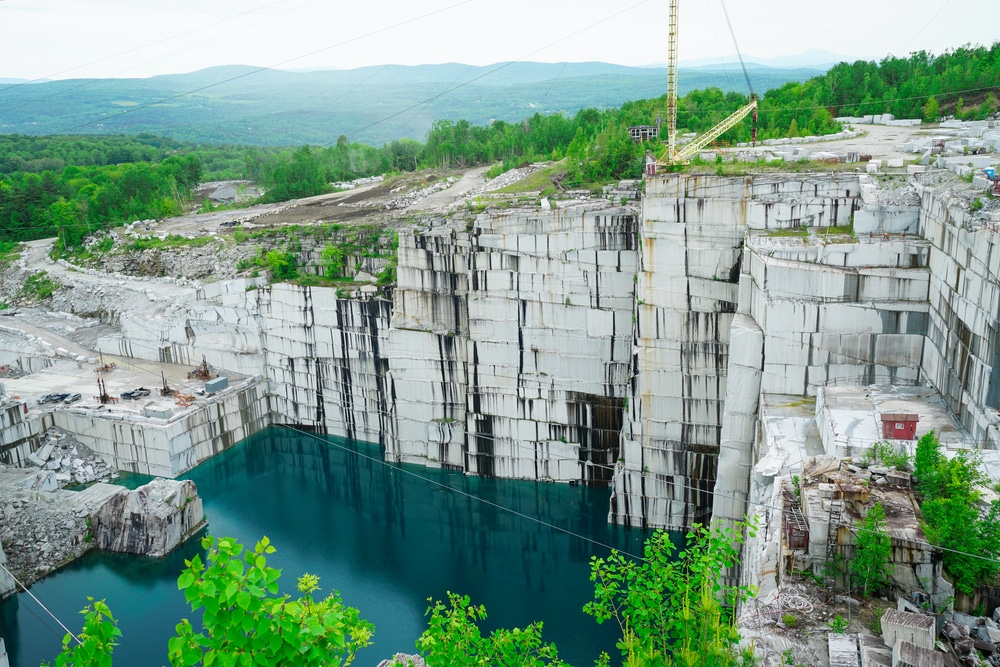Introducing the Mysteries of Granite Quarrying: Where Toughness and Beauty Meet
The globe of granite quarrying is a realm where the raw strength of nature converges with human virtuosity to produce frameworks that stand the examination of time with an air of beauty. From the depths of quarries to the careful sprucing up in workshops, the process of transforming granite right into building marvels is an intricate dancing of tradition and development. As we peer right into the midsts of this old craft, we begin to discover the covert details that shape the really essence of our built atmosphere.
The Beginnings of Granite Quarrying
In the annals of architectural background, the beginnings of granite quarrying are shrouded in a tapestry of old craftsmanship and geological wonders. Going back to ancient Egypt and Mesopotamia, the removal of granite from quarries noted the beginning of a journey that would eventually lead to the creation of several of the world's most renowned frameworks.
Granite quarrying's roots can be mapped to the experienced craftsmens that recognized the stone's sturdiness and aesthetic appeal. With a combination of primitive tools and sheer decision, these very early quarry employees uncovered granite blocks that would certainly become the building blocks of civilizations.
As worlds advanced, so did the methods of quarrying granite. The Romans, renowned for their engineering expertise, created innovative techniques for removing granite to build monuments, holy places, and roadways that stood the test of time.
The heritage of these ancient quarrying methods proceeds to form contemporary architecture, with granite staying an icon of stamina and beauty in building projects around the globe. (granite quarries in south africa)
Tools of the Quarrying Trade
The evolution of granite quarrying methods from ancient human beings to contemporary times highlights the vital function played by the devices of the quarrying trade in shaping the industry's practices. In ancient times, quarrying tools were fundamental, often including blades, hammers, and wedges made from products like bronze or iron. These devices called for significant workforce and time to remove granite blocks from quarries.

Additionally, the intro of pneumatic devices and high-powered equipment has actually dramatically reduced the physical labor required in quarrying procedures, boosting employee safety and security and performance. As the quarrying sector proceeds to innovate, the tools of the profession stay at the center of driving development and shaping Learn More the future of granite removal.
Extracting Blocks of Granite
Making use of precision equipment and advanced strategies, the extraction of granite blocks from quarries has actually become an innovative process in the modern-day quarrying industry. The preliminary action includes recognizing the location and dimension of the granite down payment to figure out one of the most effective extraction approach. As soon as a suitable website is selected, the extraction procedure starts with the boring of openings for the placement of dynamites. Regulated blasting strategies are then employed to damage apart the granite right into workable areas.

Sprucing Up and Completing Methods
To accomplish a perfect surface on granite blocks, proficient craftsmens use a series of meticulous polishing and ending up techniques. After the initial removal and forming procedures, the granite obstructs undergo an extensive polishing phase to enhance their natural elegance and longevity. One common approach used in polishing granite is diamond abrasion, where straight from the source commercial rubies are made use of to grind and brighten the rock to a smooth surface. This process not only produces a shiny surface but also guarantees harmony in shade and structure across the granite block.
In enhancement to polishing, finishing techniques are used to additional fine-tune the granite's appearance. These strategies may consist of flaming, honing, or cleaning, each offering unique textures and coatings to suit various visual preferences. Flaming, for instance, includes subjecting the granite surface area to high temperatures to create a rough, distinctive finish, suitable for outside applications where slip-resistance is important. Sharpening, on the other hand, offers a matte finish that is smooth to the touch, perfect for indoor counter tops and floor covering. By thoroughly picking and applying these polishing and completing methods, craftsmens can transform raw granite obstructs into splendid items that showcase both stamina and elegance.

Ecological Influence and Sustainability
With the growing focus on environmental awareness in the industry, a knockout post granite quarrying practices are progressively inspected for their influence on all-natural sources and long-lasting sustainability. In addition, the transport of granite from quarries to refining facilities produces carbon discharges, further adding to ecological destruction.
To reduce these influences and make certain sustainability in granite quarrying, sector stakeholders are adopting various measures. Executing advanced technologies to reduce energy usage and water usage, redeeming quarried land for ecological repair, and advertising liable sourcing methods are some strategies being used. Additionally, qualifications such as the Forest Stewardship Council (FSC) and the Leadership in Energy and Environmental Design (LEED) help consumers recognize eco-friendly granite products.
Conclusion
To conclude, granite quarrying is a process that requires specialized devices and methods to remove blocks of granite and polish them to a high degree of surface. While the ecological effect of quarrying can be significant, efforts are being made to improve sustainability practices in the industry. Overall, granite quarrying is a delicate equilibrium between taking advantage of the toughness and elegance of this natural rock while decreasing its influence on the environment.